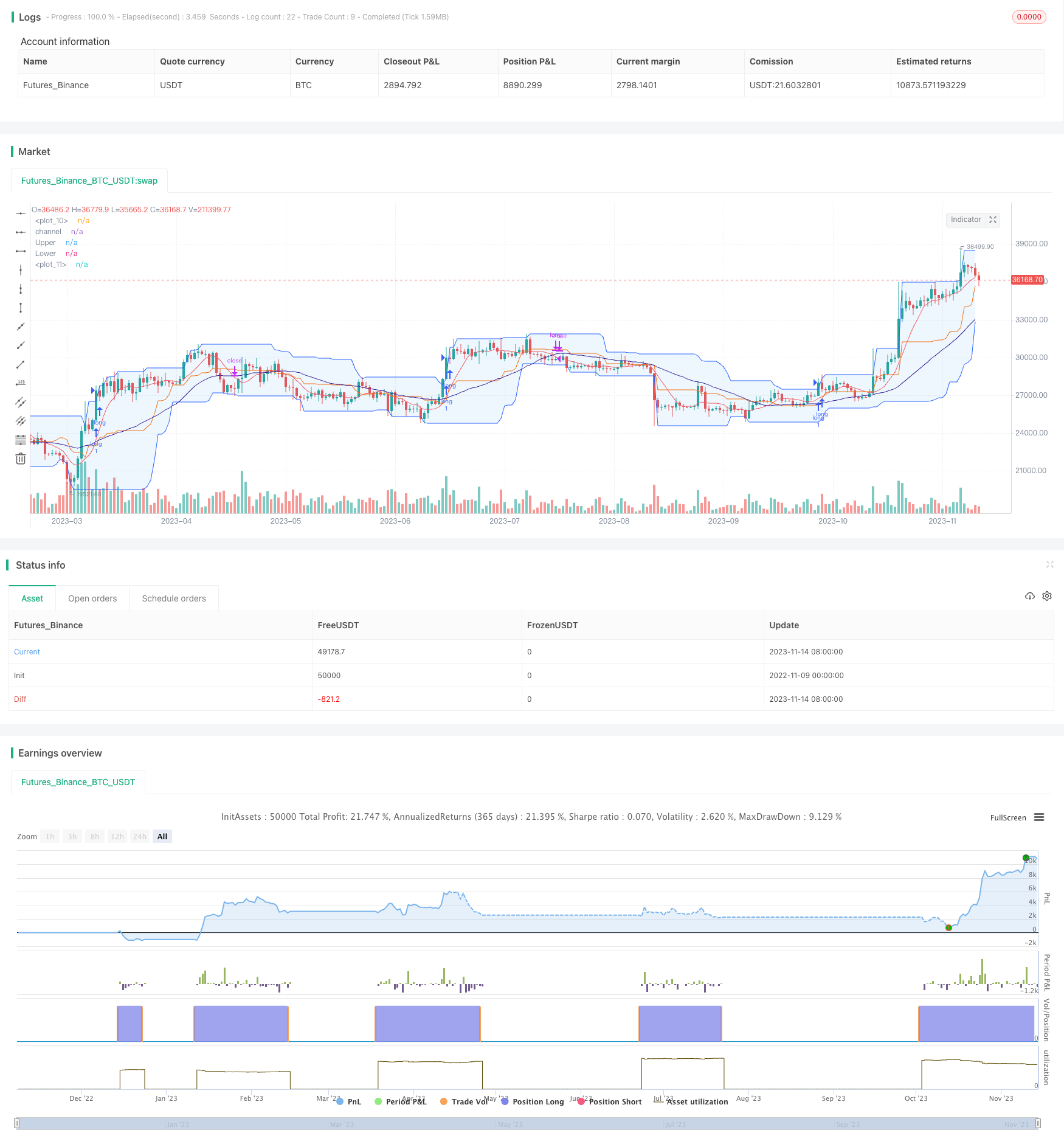
概述
该策略采用动态震荡通道突破的方式,根据价格的动态变化来确定入市和止损点。策略简单易懂,适合对趋势股进行操作。
策略原理
该策略首先计算20天内的最高价和最低价,得到动态震荡通道。然后计算8日指数移动平均线和32日指数移动平均线,当价格收盘价突破通道上轨,且8日均线高于32日均线时,做多;当价格跌破通道下轨或8日均线下穿32日均线时,平仓。 止损方式为价格低于通道中轨时止损。
具体来说,策略的入市条件是:
收盘价突破20日内最高价构成的动态上轨
8日均线高于32日均线
策略的退出条件是:
价格低于通道中轨时止损
8日均线下穿32日均线时平仓
该策略利用动态通道判断趋势方向,同时辅以均线判断目前处于上升趋势,可以有效控制风险。
策略优势
- 利用动态通道突破判断趋势方向,不易被困在震荡市中
- 8日与32日均线组合可以有效判断趋势,避免错误交易
- 策略规则简单清晰,容易理解实现
- 止损方式比较稳定可靠
策略风险
- 突破失败可能造成亏损
- 动态通道参数设置不当可能导致通道过于宽泛或过于窄小
- 均线参数设置不当也会影响判断效果
- 止损点过近可能造成止损过度
可以通过调整通道周期参数、均线周期参数、以及合理设置止损来优化策略,控制风险。
策略优化方向
- 可以根据不同股票特性优化通道周期参数
- 可以测试不同均线组合,寻找更佳的参数
- 可以结合交易量来确认突破效果
- 可以在突破后追踪止损点
总结
动态震荡突破策略整体思路清晰易懂,以动态通道判断趋势方向,然后利用均线过滤效果进行入市。设置止损可以有效控制风险。通过参数优化可以提高策略Profit Factor。该策略适用于具有突破continuation效应的股票,尤其适合于创新高向上突破的场景。
策略源码
/*backtest
start: 2022-11-09 00:00:00
end: 2023-11-15 00:00:00
period: 1d
basePeriod: 1h
exchanges: [{"eid":"Futures_Binance","currency":"BTC_USDT"}]
*/
// This source code is subject to the terms of the Mozilla Public License 2.0 at https://mozilla.org/MPL/2.0/
// © Robrecht99
//@version=5
strategy("My Strategy", overlay=true, margin_long=100, margin_short=100)
fast = ta.sma(close, 8)
slow = ta.sma(close, 32)
plot(fast, color=color.red)
plot(slow, color=color.navy)
entrycondition1 = ta.crossover(fast, slow)
entrycondition2 = fast > slow
sellcondition1 = ta.crossunder(fast, slow)
sellcondition2 = slow > fast
atr = ta.atr(14)
//Donchian Channels
days = 20
h1 = ta.highest(high[1], days)
l1 = ta.lowest(low[1], days)
mid = math.avg(h1, l1)
plot(mid, "channel", color=#FF6D00)
u = plot(h1, "Upper", color=#2962FF)
l = plot(l1, "Lower", color=#2962FF)
fill(u, l, color.new(color.blue, 90))
if (close > h1 and entrycondition2)
strategy.entry("long", strategy.long)
stoploss = close - atr * 3
trail = close - atr * 3
strategy.exit("exit", "long", stop=stoploss, trail_offset=trail)
if (sellcondition1 and sellcondition2)
strategy.close(id="long")